Anapea Village
We've always been intrigued by Georgian wines. In many ways, Georgia the original home of natural winemaking with a history going back 8,000 years. Furthermore, the trends of orange wine and amphora winemaking that are now in vogue started in Georgia. With an aim to go back to the 'motherland,' we searched diligently for a Georgian producer that makes clean and delicious minimal intervention wines. We're overjoyed to partner with Anapea Village. Khatia and Gocha started Anapea Village and their journey in 2013. A wife and husband team, they planted vineyards and built a winery in the east of Georgia to rehabilitate the traditions of Georgian grape growing and winemaking.
From the start, they've farmed organically. Only indigenous varieties are planted in their vineyards. Harvest typically occurs in early September and is completed by hand. Once the grapes reach the winery, fermentation occurs on skins for red and white grapes in qvevri. The winery has 2 sets of qvevri, one for fermentation and one for aging. Both are buried below ground but at different levels. For fermentation, qvevri buried just below the earth's surface are used. With a slightly warmer ambient temperature, the environment is perfect for fermentation and extraction. Following six months of maceration, the wines are racked off the skins and gross lees to another set of qvevri, buried 6 meters below ground. With a cooler temperature, this zone is perfect for aging and stabilizing the wines. The wines are bottled with minimal to no sulfur and are neither fined nor filtered. The result is clean, concentrated, and balanced wines that we're delighted to introduce to the US market.
From the start, they've farmed organically. Only indigenous varieties are planted in their vineyards. Harvest typically occurs in early September and is completed by hand. Once the grapes reach the winery, fermentation occurs on skins for red and white grapes in qvevri. The winery has 2 sets of qvevri, one for fermentation and one for aging. Both are buried below ground but at different levels. For fermentation, qvevri buried just below the earth's surface are used. With a slightly warmer ambient temperature, the environment is perfect for fermentation and extraction. Following six months of maceration, the wines are racked off the skins and gross lees to another set of qvevri, buried 6 meters below ground. With a cooler temperature, this zone is perfect for aging and stabilizing the wines. The wines are bottled with minimal to no sulfur and are neither fined nor filtered. The result is clean, concentrated, and balanced wines that we're delighted to introduce to the US market.
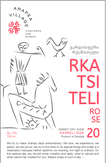
Rkatsiteli Rose, PDO Kvareli
Rkatsiteli is a green grape for making white and amber wine. In the 1950s, workers in a vineyard in Kakheti discovered a mutation of the grape that had pink skins. Anapea village has planted this variety to see what level of quality it can achieve. 6 months on skins in qvevri with an additional 6 months of aging in a cooler set of qvevri. Unfined and unfiltered. Bottled with minimal sulfur as necessary.
Shelf Talker
Rkatsiteli is a green grape for making white and amber wine. In the 1950s, workers in a vineyard in Kakheti discovered a mutation of the grape that had pink skins. Anapea village has planted this variety to see what level of quality it can achieve. 6 months on skins in qvevri with an additional 6 months of aging in a cooler set of qvevri. Unfined and unfiltered. Bottled with minimal sulfur as necessary.
Shelf Talker
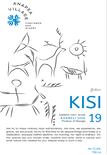
Kisi, PDO Kvareli
In the hands of Khatia, Kisi producers a more savory and layered style of traditional amber wine. 6 months on skins in qvevri with an additional 6 months of aging in a cooler set of qvevri. Unfined and unfiltered. Bottled with minimal sulfur as necessary.
In the hands of Khatia, Kisi producers a more savory and layered style of traditional amber wine. 6 months on skins in qvevri with an additional 6 months of aging in a cooler set of qvevri. Unfined and unfiltered. Bottled with minimal sulfur as necessary.
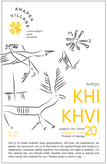
Khikhvi, PDO Kvareli
A varietal that is wild and 'loves freedom,' Khikhvi is Khatia's favorite grape. It brings power and opulence but is tempered by Khatia's deft hand in the cellar. 6 months on skins in qvevri with an additional 6 months of aging in a cooler set of qvevri. Unfined and unfiltered. Bottled with minimal sulfur as necessary.
A varietal that is wild and 'loves freedom,' Khikhvi is Khatia's favorite grape. It brings power and opulence but is tempered by Khatia's deft hand in the cellar. 6 months on skins in qvevri with an additional 6 months of aging in a cooler set of qvevri. Unfined and unfiltered. Bottled with minimal sulfur as necessary.
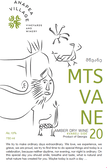
Mtsvane, PDO Kvareli
Mtsvane means 'green' in Georgian. It's a grape marked by bright acids along with tropical and floral aromatics. 6 months on skins in qvevri with an additional 6 months of aging in a cooler set of qvevri. Unfined and unfiltered. Bottled with minimal sulfur as necessary.
Shelf Talker
Mtsvane means 'green' in Georgian. It's a grape marked by bright acids along with tropical and floral aromatics. 6 months on skins in qvevri with an additional 6 months of aging in a cooler set of qvevri. Unfined and unfiltered. Bottled with minimal sulfur as necessary.
Shelf Talker
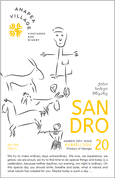
Sandro, PDO Kvareli
Khatia's most recent experiment in the winery leads her to co-ferment Kisi, Khikhvi, and Mtsvane in equal portions. You can taste each individual part (savoriness of Kisi, power of Khikhvi, and fruit of Mtsvane), but it is the elegance in this co-ferment that stands out. Same winemaking as Khatia's other amber wines: 6 months on skins in qvevri with an additional 6 months of aging in a cooler set of qvevri. Unfined and unfiltered. Bottled with minimal sulfur as necessary.
Khatia's most recent experiment in the winery leads her to co-ferment Kisi, Khikhvi, and Mtsvane in equal portions. You can taste each individual part (savoriness of Kisi, power of Khikhvi, and fruit of Mtsvane), but it is the elegance in this co-ferment that stands out. Same winemaking as Khatia's other amber wines: 6 months on skins in qvevri with an additional 6 months of aging in a cooler set of qvevri. Unfined and unfiltered. Bottled with minimal sulfur as necessary.
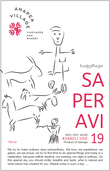
Saperavi, PDO Kvareli
Saperavi is a unique red grape in that it has dark, pigmented flesh. This makes for dark and concentrated wines that combine power with elegance from its notable acidity. 6 months on skins in qvevri with an additional 6 months of aging in a cooler set of qvevri. Unfined and unfiltered. Bottled with minimal sulfur as necessary.
Shelf Talker
Saperavi is a unique red grape in that it has dark, pigmented flesh. This makes for dark and concentrated wines that combine power with elegance from its notable acidity. 6 months on skins in qvevri with an additional 6 months of aging in a cooler set of qvevri. Unfined and unfiltered. Bottled with minimal sulfur as necessary.
Shelf Talker
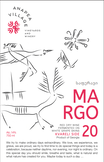
Margo, PDO Kvareli
This wine is the product of one of Khatia's many experiments. The wine begins with the early harvest of Mtsvane at 22°Bx. Grapes are crushed and start the fermentation on the skins. As the season continues, fully ripe Saperavi is harvested at 25°Bx. At this point, the juice of Mtsvane is removed from the Qvevri, leaving the must. Khatia then directly presses Saperavi juice into the qvevri. The fermentation on the skins lasts for 6-7 days after which the juice is removed from the skins and continues fermenting. The wine is then transferred to the aging qvevri where it rests for 6 months. This ingenious method results in a red wine with the juiciness of a white.
This wine is the product of one of Khatia's many experiments. The wine begins with the early harvest of Mtsvane at 22°Bx. Grapes are crushed and start the fermentation on the skins. As the season continues, fully ripe Saperavi is harvested at 25°Bx. At this point, the juice of Mtsvane is removed from the Qvevri, leaving the must. Khatia then directly presses Saperavi juice into the qvevri. The fermentation on the skins lasts for 6-7 days after which the juice is removed from the skins and continues fermenting. The wine is then transferred to the aging qvevri where it rests for 6 months. This ingenious method results in a red wine with the juiciness of a white.